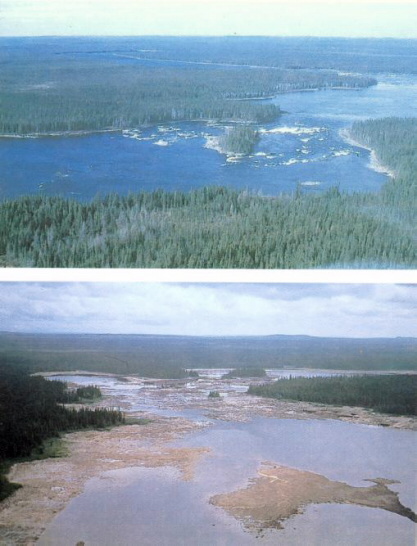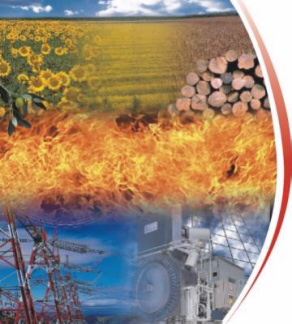|
It refers to the construction of a series of hydroelectric power stations, dams and river diversions from the interior of
northern Quebec and west into James Bay.
It is named after James Bay which is located on the southern end of Hudson Bay in Canada, bordering Ontario and Quebec.
The project could produce 28 million kilowatts of energy, an amount that is equivalent to 1/4th of Canada's present electricity
consumption.

Brief History:
Quebec turned to hydroelectric power in the 1960s to reduce its dependence on foreign oil. With the rise of oil prices in
the 70s, hydroelectric power gained momentum and the James Bay was announced in 1971.
The Project is divided into three phases:
Phase 1:
The period of construction in the first phase took 14 years. The construction involved building dams on La Grande River and
the diversion of water from three other rivers the Eastmain, Opinaci and Caniapiscau. Completed in 1985, the development generates
more than 10 million kilowatts of electric power.
Phase 2:
During the late 80s and early 90s, the second phase of the project focuses constructing 5 other power plants on the La Grande
River and its tributaries. An additional project was proposed which involved damming the Great Whale River that flows through
the transitional area between the tundra and taiga in Quebec and emptying into the Hudson Bay. However it has been halted
because of low prices for electrical energy and opposition from indigenous people.
Phase 3:
The third phase, beginning in 2005, involves the Rupert rivers project which entails the diversion of 50% of the total water
flow of the Rupert River toward the Eastman Reservoir and into the LA Grande River. Also the plan involves the construction
of two additional hydroelectric generating stations.
Eastmain River before

Eastmain River now
Issues:
* The James Bay Project has diverted water flow of the Eastmain and Caniapiscau rivers into the La Grande River
* Water flow has been reduced by 90% at the mouth of the Eastmain River, by 45% where the Caniapiscau River flows
in to the Koksaok River and by 35% at the Koksoak River mouth
* Over 11,000 kmē of boreal forest have been submerged
* The Cree and Inuit of northern Quebec say the project flood their hunting and fishing grounds. Also the fish they
do obtain is contaminated with mercury.
Work Cited
http://jamesbayroad.com/hydro/index.html
http://www.time.com/time/magazine/article/0,9171,973377,00.html?promoid=googlep
http://canadianeconomy.gc.ca/english/economy/1972James_Bay_Project.html
|
